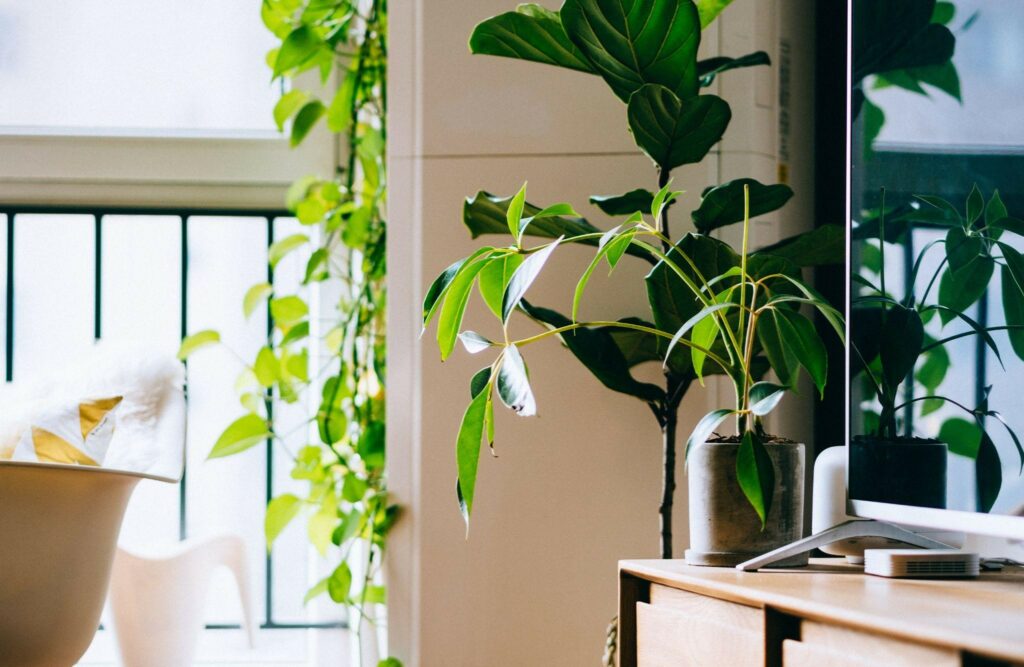As we move into the spring and summer seasons, things like cleaning and household renovations can end up at the wayside. The weather is warmer, you’re spending more time outside. Over time, neglecting updates in your home can cause the winter months to feel more brutal and can bring pollutants into your home. Keeping your home up to date is key to keeping the air quality in your home well-filtered while in these colder months; these are some smaller updates that can improve your home and save you money in the long run.
Properly Insulate
Insulation is a key component in not only making your home more energy-efficient, but it can also help with the air quality in your home. It helps keep your living space cool in the summer, and warm in the winter without any additive costs afterward. One of the best types of insulation is spray foam; it’s preferred for corners and abnormal angles.
By including air sealing while regulating temperature through insulation, you’ll end up keeping unwanted air from entering your home. This is more vital for urban areas due to local pollutants, but don’t count this out if you live more rurally. Air leaks are pretty common, and can let in 3-4 times more air than your heating or coolant system will want, causing your energy bills to skyrocket. Insulating and air sealing are usually done together to lower costs as well, so if planning on contracting out make sure the professional you hire can do both.
Air Purification
Not only do cooler months cause dry skin, but they can also increase the generation of mold, allergens, and other viruses within your home. While the warmer months allow for the windows to be open for a breeze, you’ll want to make sure you also have fresh air running through the house at all times, especially when it’s too hot to keep them open.
An air purifier will clean the air in your home, even if you keep those side windows or doors open in hot weather. Make sure you choose one that fits not only your home’s layout but your cost criteria as well. Some are more expensive, either due to how they’re built or the brand. If you can, choose an air purifier that is low-energy to save the most during purchase, as well as during use.
Bathroom Updates
Believe it or not, this is a place where air quality can be some of the worst! Due to the damp environment that can take place, mold and mildew build up quickly and without notice. This can cause health issues including asthma, a weakened immune system, and skin rashes. The first step is to check your fans for functionality; air should be flowing outside, not into another section of your home (this includes the attic). If you find that the direction of airflow is not headed outside, changing out the bathroom fans will be critical for air improvement. If you live somewhere in colder weather, this will also help ventilation for the entire house, not just the bathroom.
Managing where water flows is also key to creating a healthy bathroom environment by minimizing where mold can find a home. Consider updating your bathroom sink vanity to upgrade the plumbing and ensure there are no leaks, while also creating an air seal to avoid mold and mildew buildup. Add wetwalls if the bathroom doesn’t already have these to keep moisture off the walls and prevent potential cavities in the floor. If you’re already seeing issues, these are great to address to avoid future air quality problems and renovation projects.
Add in Greenery
This is an easy way to create better air quality inside the home. This goes without saying that some plants in closed areas can help purify the air inside your house. While there are plenty of indoor pollutants that you’ll be familiar with, cleaning chemicals can actually cause more damage. Indoor houseplants can filter out toxins and improve air quality without needing much space. Make sure to include these in a few rooms to circulate and filter the air in rooms you spend the most time in, especially ones without windows for circulation.
While your home can never be fully updated to have the perfect air quality, it’s important to make updates every year to make your home as healthy as possible. Moving into warmer months, make these changes while you have the extra daylight to ensure a safe renovation environment.

